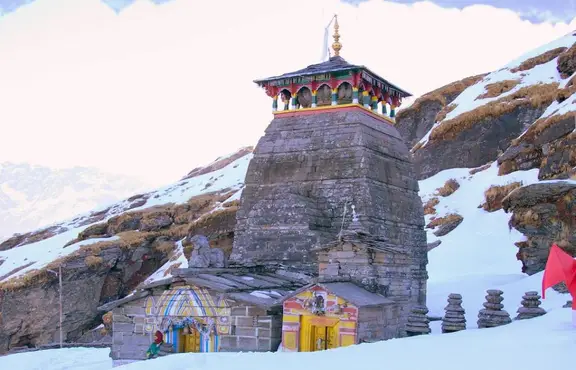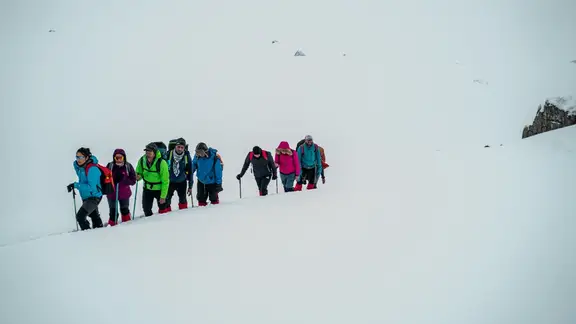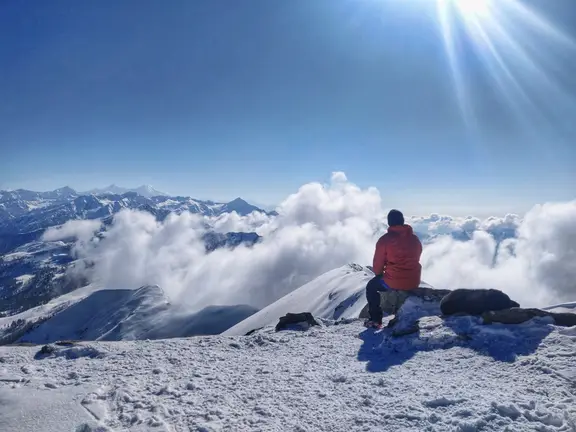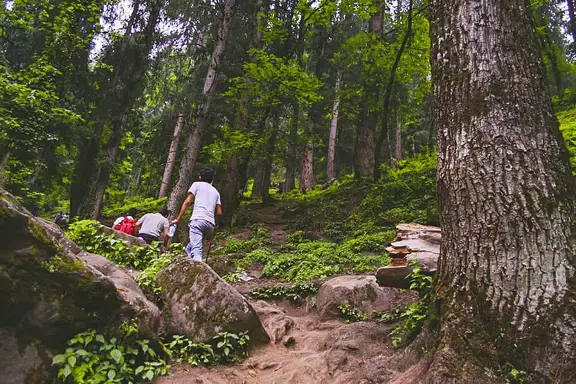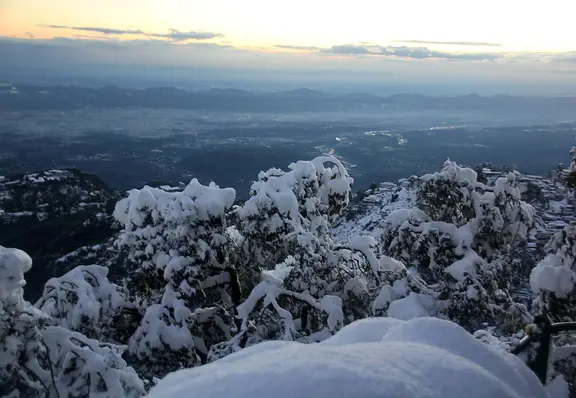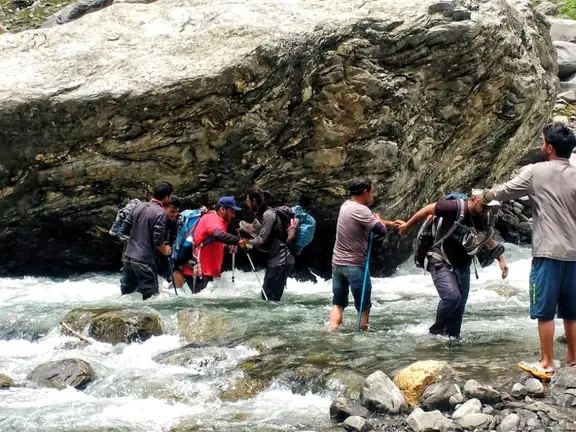Confused about trekking during periods? Here are some tips on trekking during periods.
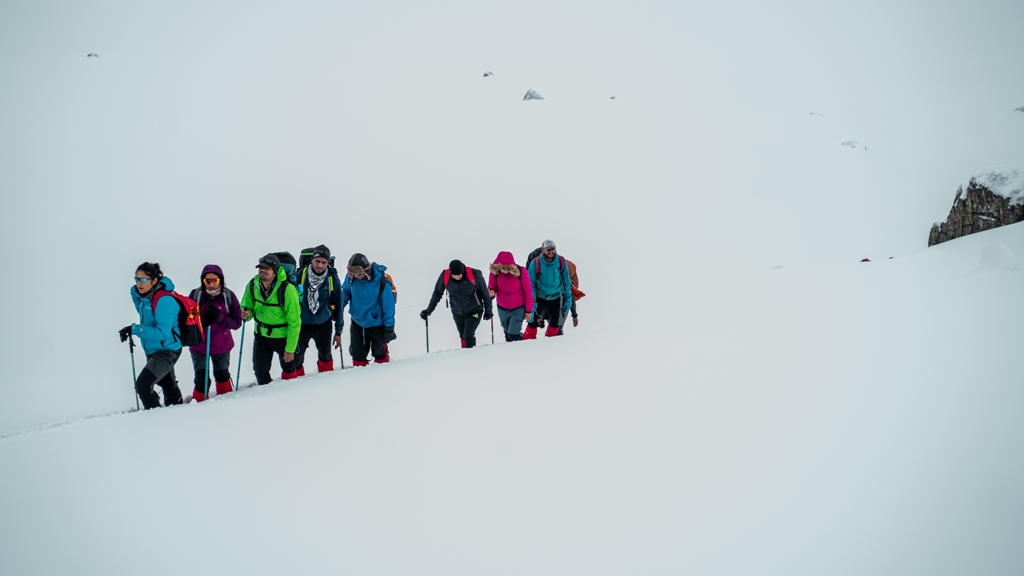
Has it ever happened that you planned to go trekking, but your periods started right at the time of your trip?
You may have canceled that trip, right?
Well, if you did that, then I will tell you missed an opportunity due to misconception.
We have all heard that physical exertion triggers period cramps, so it may sound like trekking is a bad idea during those five days of the month.
Hey, hold on. It’s a MYTH. No scientific theory backs up this claim.
Another weird myth is the bear can smell the period blood from a distance and can trace and attack the person having periods. Trails used by men are always far away from the places where wild animals usually roam.
“Is it safe to trek during periods?”
“How can I change my sanitary napkin and disposed of it when I’ll be in the trail away from the privacy and comfort of my home?”
These are the queries that always wander in your mind if you are a trekking enthusiast.
In this post, we are going to answer all your questions and provide you with tips and tricks to avoid any predicament when you are hiking during periods.
Why is it perfectly ok to trek during menstruation?
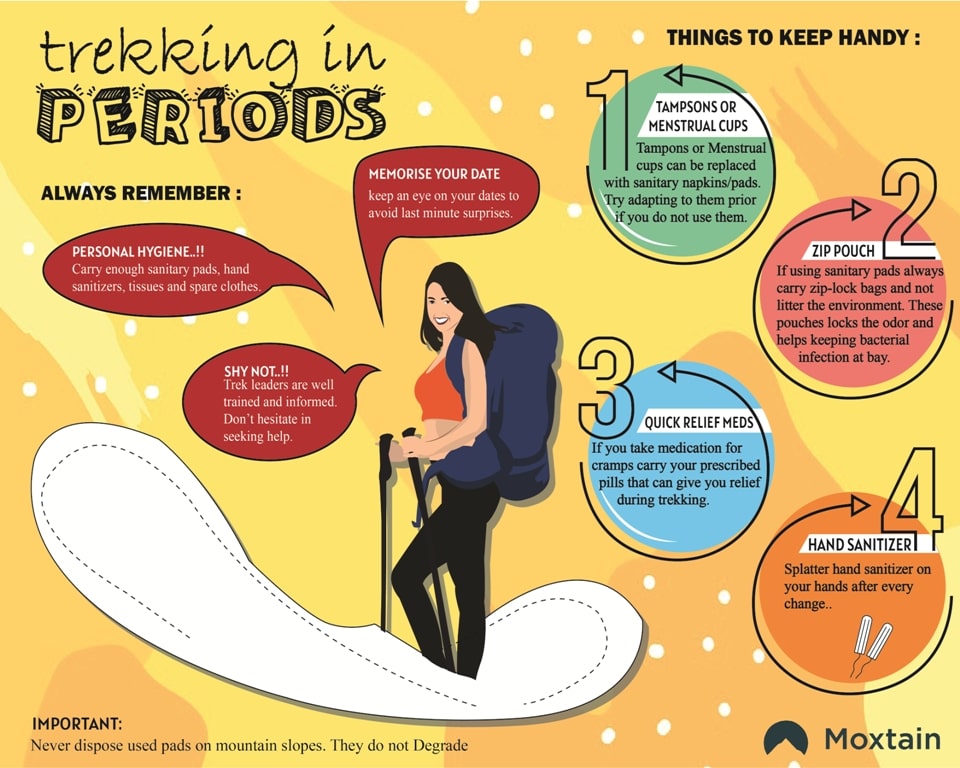
It is a myth that exertion makes period cramps worse. Instead, the more physically active you are, the less the pain and uneasiness will be there.
If you are concerned about the frequent mood swings and anxiety during your chums, then cool mountain breeze and beautiful landscapes along the trail will soothe your body and mind.
These days trek organizers are arranging treks with smart and eco-friendly toilet tents where you can change pads or tampons or whatever you use and change your clothes if you need to.
A lot of hygiene accessories are available now for periods that reduce discomfort, leakage, and bad odor. So, there is practically nothing to worry about.
If women athletes can participate in rigorous exercise and practice routine and compete in the tournaments wearing tampons, Diva Cups during their menstruation, then why can’t you? I know you may not be an athlete but, trekking during your periods is as easy as challenging, which can bring out how much tough your body is.
It is absolutely OK, climbing a mountain on your periods. But if you are prone to terrible period cramps every time you bleed, then reconsider your decision of going for a trek and talk with your gynecologist.
How to deal with it?
Tampons and menstrual cups are blessing when it comes to indulging in moderate to high-level outdoor activities.
Tampons occupy less space in your kitbag and are more suitable when you are trekking in rainy weather or crossing a river or swimming. Unlike sanitary napkins, tampons do not get wet. Tampons are also comfier than sanitary pads.
Using period cups is the most convenient way of managing your periods when on a trek. Menstrual cups are like tampons- they do not get wet too but are more environment friendly as they are washable and reusable. If you are into period cups, then stop bothering about how you are going to dispose of it.
But if you are not accustomed to these two, then using a sanitary napkin is fine.
Also, carry pain killers and other types of essential medicines just for the safety if your abdomen starts aching suddenly in the mountains.
Should you cancel your trek?
Absolutely not.
Having your periods and handling it in the mountains may not be straightforward, but smart hacks and proper planning will make it manageable.
Don’t be shy about it.
Though the period was a taboo in the past and there used to be a hush-hush attitude around this topic, things have changed a lot now.
Women are vocal about it more than before, and men do know what period is and how important it is even though they do not experience it.
So, shed away your fear and shyness and discuss it with your friend in the group. Tell him or her to inform you if you accidentally have bloodstains on your pants. In this case, you can wrap a jacket or shirt around your lower waist to cover the mess.
What is an alternative to taking a bath?
Remaining fresh and maintaining hygiene is a must, whether you are in period or not during the trek. You can carry un-scented wet wipes. When you reach the basecamp or have access to a toilet tent, and you feel you need to clean yourself, just wipe and cleanse your body, especially where you sweat more.
You can use soft handkerchiefs to clean yourself after damping them with little water. Change your clothes only after you clean yourself.
Also, change your pad or tampon or whatever you use regularly to avoid infection.
Dispose of it in the right way
This issue is probably the biggest headache if you get your period at the time of your trek. But trust me, this problem has the simplest solution.
You should have a Ziplock pouch or at least a couple of plastic bags in your backpack. When you are changing your tampon or pad, you can wrap the used one with sufficient tissue paper and place them into the Ziplock or plastic bag. Put that bag into a separate chamber of your kit bag and carry them with you to the nearest city or lodge where the solid waste management is present and dump that bag in a dustbin.
Remember, NEVER leave your used pads or tampons in the mountains. It is our moral and ethical duty as a trekkers to keep mountains and forests clean. Ziplock bags are better because of the foul smell of your period blood cannot leak through it.
If you are using menstrual cups, then I’ll suggest digging a cathole, preferably away from any water body, trail, or camping site, empty the cup into the hole and bury it with soil. Wash the cup with warm water, which is easily available at the base camp. While on the trail, you can use drinking water that you are carrying with you to rinse the cup.
Practice proper hygiene
Besides wiping yourself with a wet tissue or hanky, do not forget to brush your teeth, comb hair, wash your face and hands and answer the call of nature. Water is available at any campsite.
Change your cloth after every two days or even more frequently if you are on a strenuous trek as you will sweat more. But on high altitude, you may not need to change that often. You should carry three to four sets of clothes for a week-long trek.
But changing your undergarment every day is a good way to remain fresh and keep bad body odor at bay.
Also, change socks quiet often.
Some quick tips for plesant journey
- Pack your bag wisely. Do not forget to pack a lot of pads, tampons, or whatever you generally use. Also, do pack medicines, clips to dry your washed cloths, talcum powder to prevent bad smell on the socks by sprinkling it into the socks, some chocolates to brighten up your mood on the days of heavy flow, Ziplock bag, panty liners, cloths and a lot of undergarments.
- Avoid wearing white or any light-colored bottom wear so that even if you get stains, it remains less obvious.
- If you are not into tampons or menstrual cups, then do not wear those for the first time when trekking. Instead, if you plan your trekking a couple of months in advance, then, in the meantime, get used to tampons or cups in your home, and then it is totally fine to use these on the trek.
- Carry a hand sanitizer that will help clean your hands after you change and clean down there on the trail. Carry soap to wash your hands when you are at the camp and have access to plenty of water. However, try to carry everything bio-degradable that will go to waste eventually.
Keep yourself Hydrated
It does not matter whether you have periods or not staying hydrated is mandatory. Otherwise, you will feel exhausted, and this, in addition to menses, may take a toll on your health.
Keep your trek leader informed
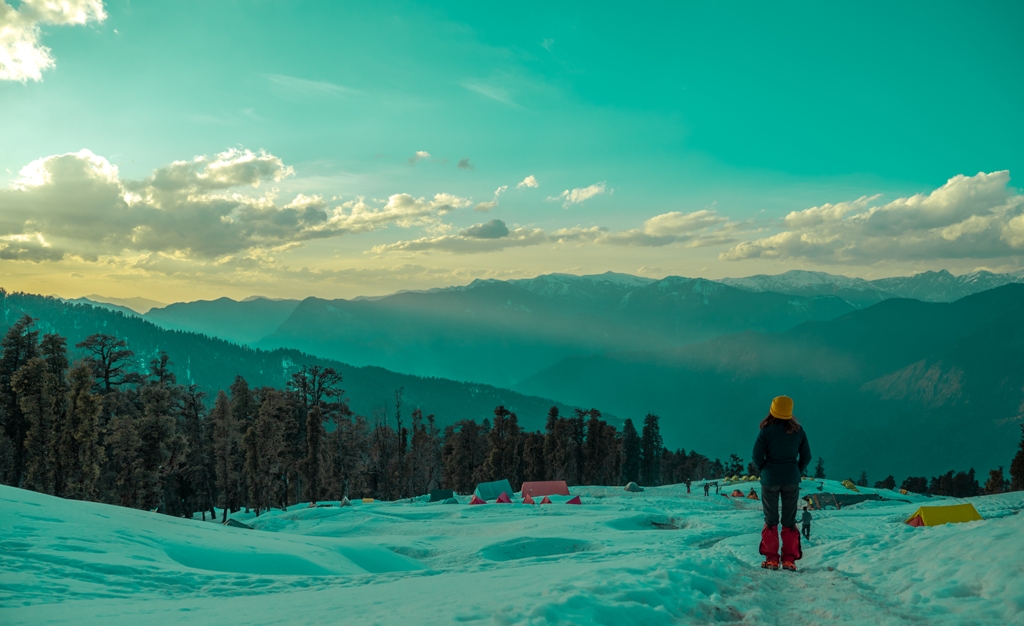
Trek leaders are predominantly male but do not hesitate to inform them that you are on your period. They are aware of periods and are well-trained about it. If you feel weak on the way, you can ask your trek leader to take a break or slow down the pace.
Trek leaders always have some sanitary napkins packed in the first-aid kits that they carry. So, even if you do not carry period essentials and your period starts abruptly on the trail, you can make your trek leader aware of the situation and ask him for help.



